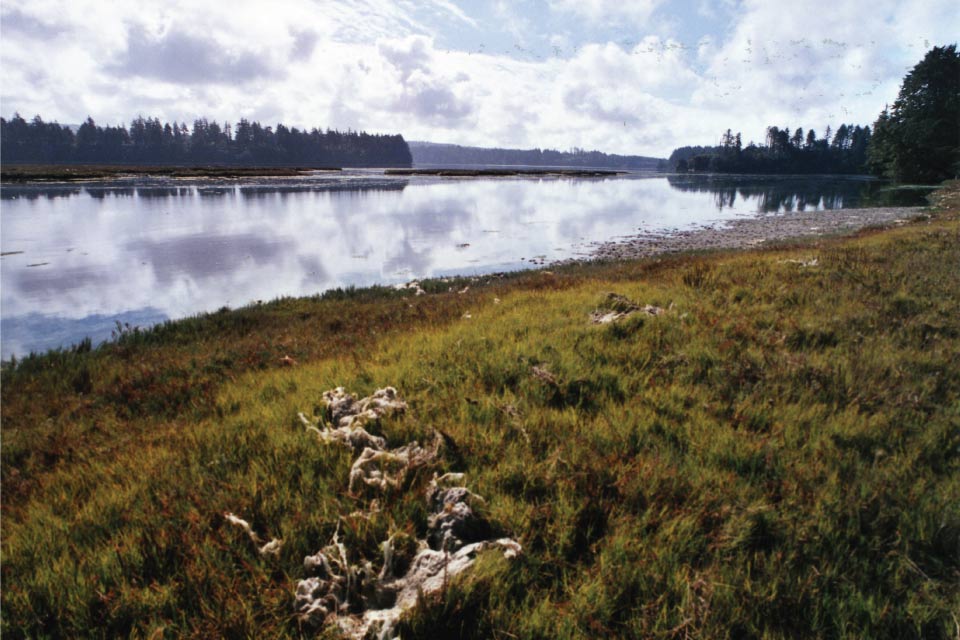What is a slough?
A slough is a swamp or shallow lake system, usually a backwater to a larger body of water

South Slough is a 4,771-acre National Estuarine Research Reserve located on Coos Bay Estuary in Oregon (Photo credit: J. Bragg).
Did you know?
While this term is used differently across the country, on the West Coast a slough is referred to as a swamp or shallow lake system, usually a backwater to a larger body of water.
Slough is typically pronounced "slew" in most of the United States. In New England, you may hear it pronounced in a way that rhymes with "cow"— this is the preferred British pronunciation. You may also hear this word pronounced as "sluff." With this pronunciation, slough has a different meaning.
A slough is typically used to describe wetlands. Sloughs along the edges of rivers form where the old channel of the river once flowed. These areas are also referred to as oxbows because they tend to form at a bend in the old river bed, making them look like the U-shaped collar placed around the neck of an ox to which a plow is attached.
Along the West Coast, sloughs are often named for the quiet, backwater parts of bays and therefore, they are part of the estuary, where freshwater flows from creeks and runoff from land mix with salty ocean water transported by the tides.
There are two sloughs in the National Estuarine Research Reserve System (NERRS). First, Elkhorn Slough is located just north of Monterey, California. Elkhorn Slough is known as a popular birding destination with more than 135 species of birds including six that are listed as threatened or endangered. Second, there is the South Slough NERR located in southwestern Oregon. South Slough provides important habitat for salmon, great blue herons, bald eagles, migrating ducks, elk, sea otters, oysters, and crabs.
While, Elkhorn and South Slough share many of the same estuarine species, their climates and watersheds are quite different. Elkhorn is much drier, and historically was set in a watershed of prairie, chaparral, and oak woodlands, while South Slough is wetter and heavily wooded. Agriculture now surrounds Elkhorn Slough, and pollution is a major issue, while timber harvest and associated effects are more of an issue at South Slough. At both sloughs, the NERRS are working within their community to achieve sustainable practices that support healthy estuaries.
NERRS is a network of 30 reserves around the U.S. representing unique coastal ecosystems. Established by Congress under the Coastal Zone Management Act, the reserves are "living laboratories" managed through a partnership between NOAA and coastal states and territories for long-term research, ecosystems monitoring, education, and coastal stewardship.
Social